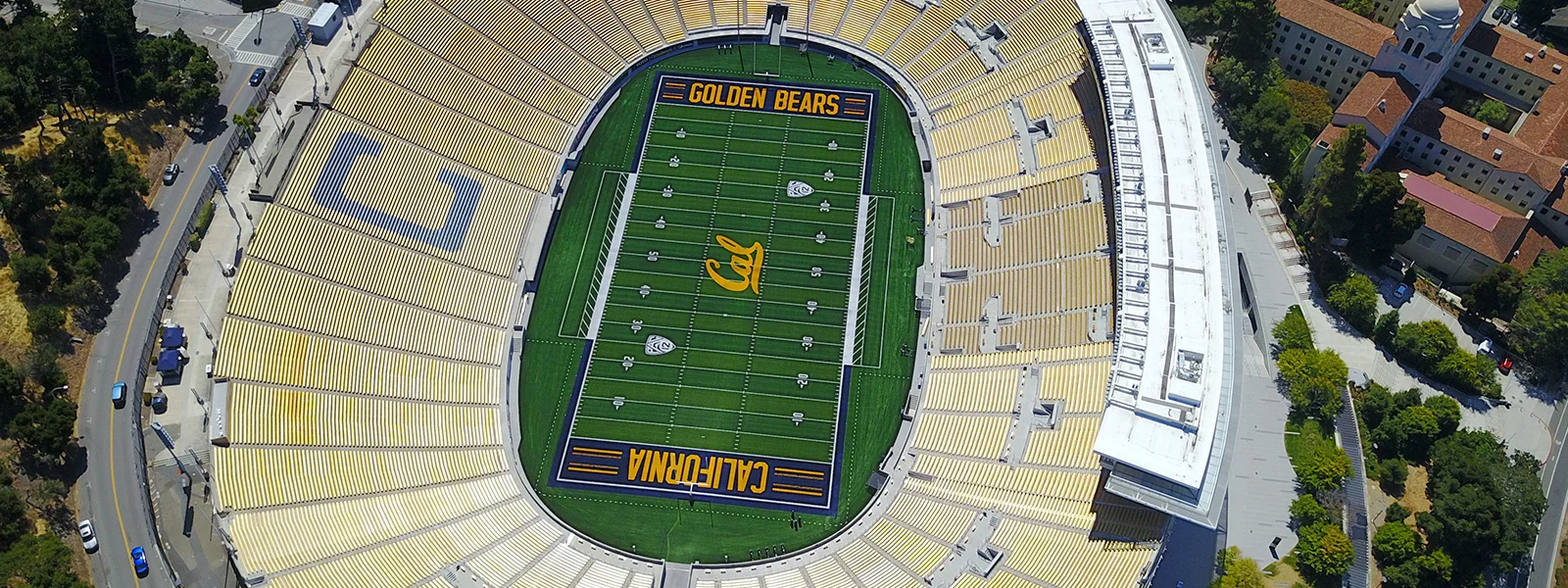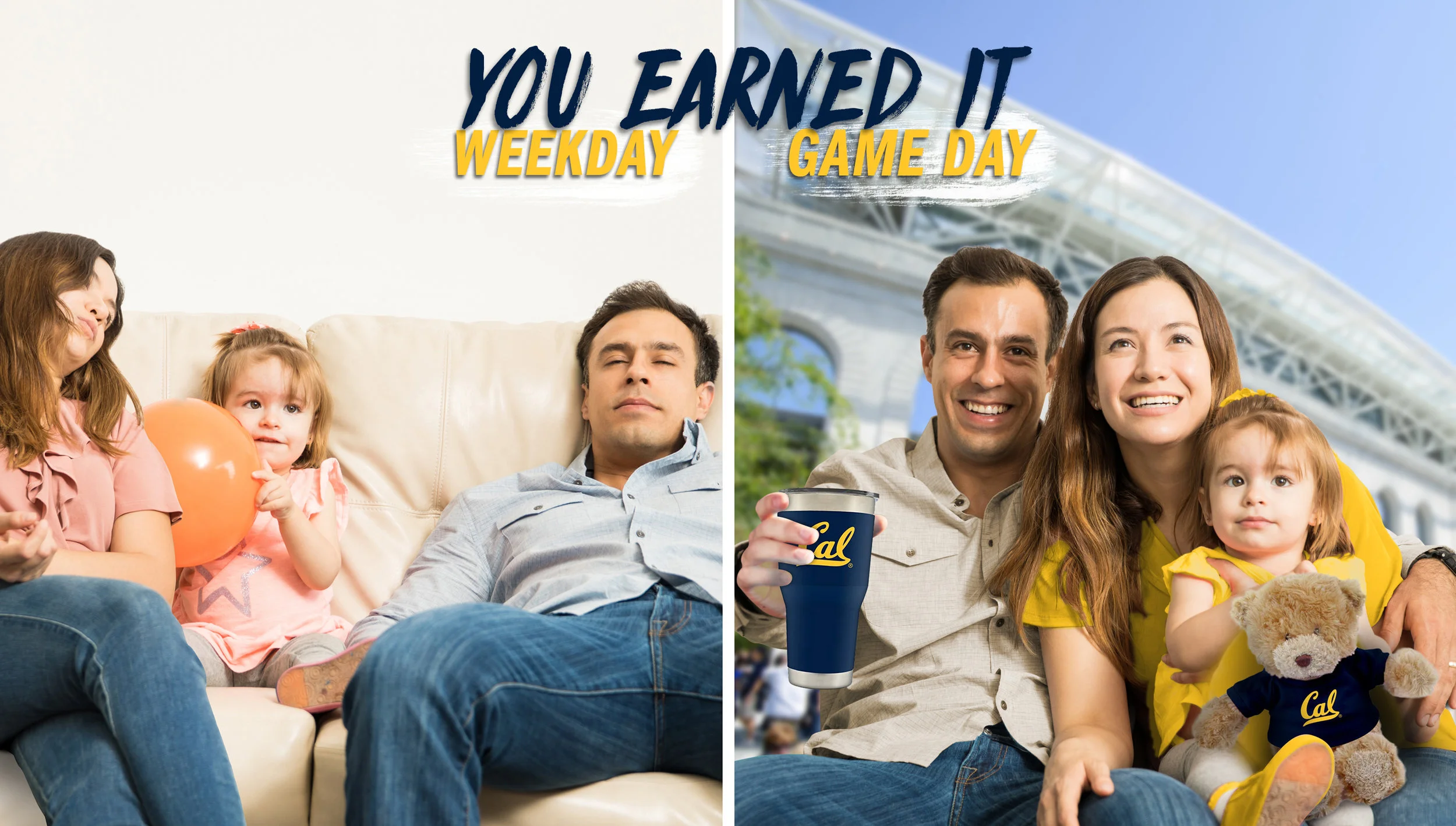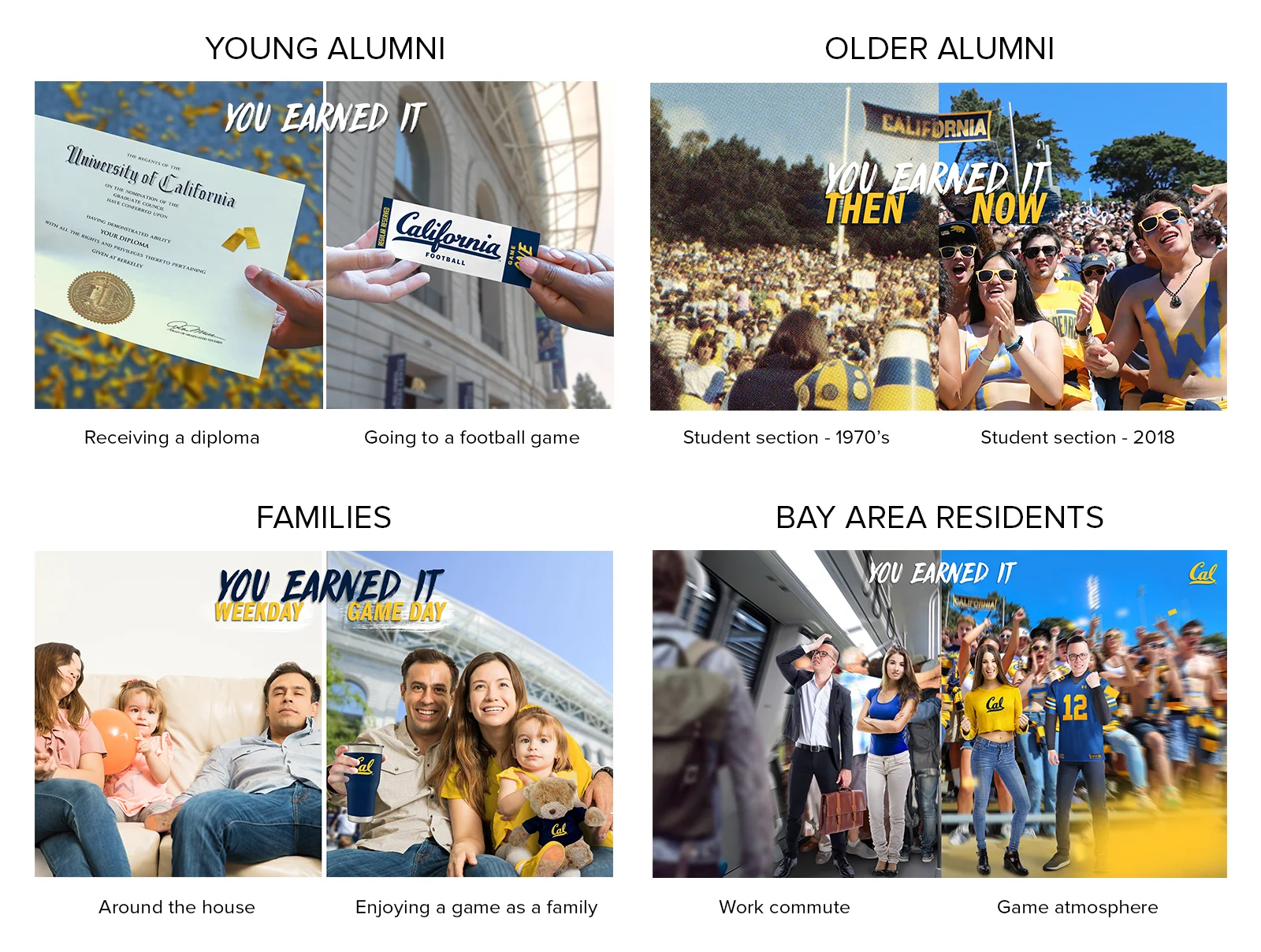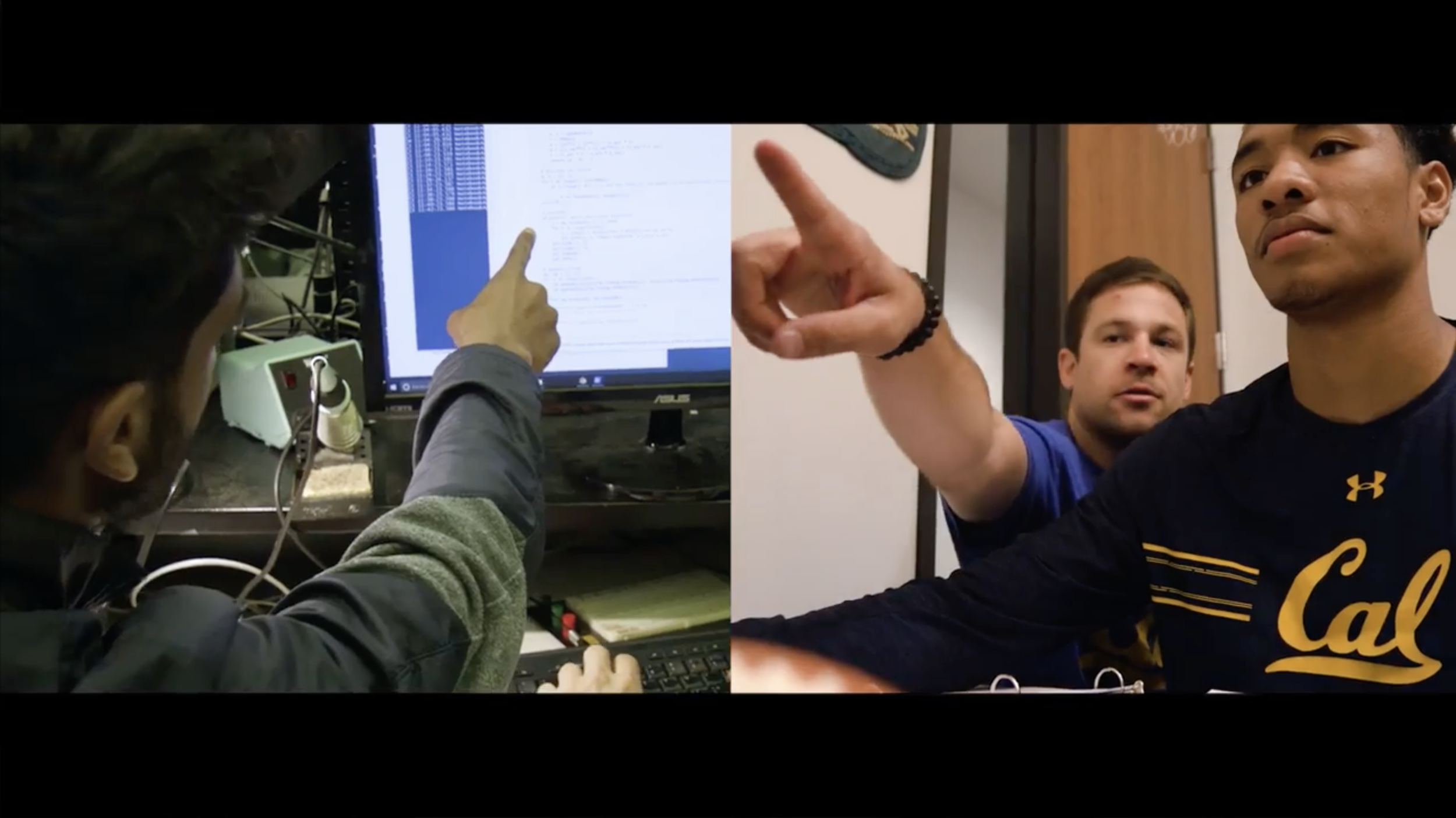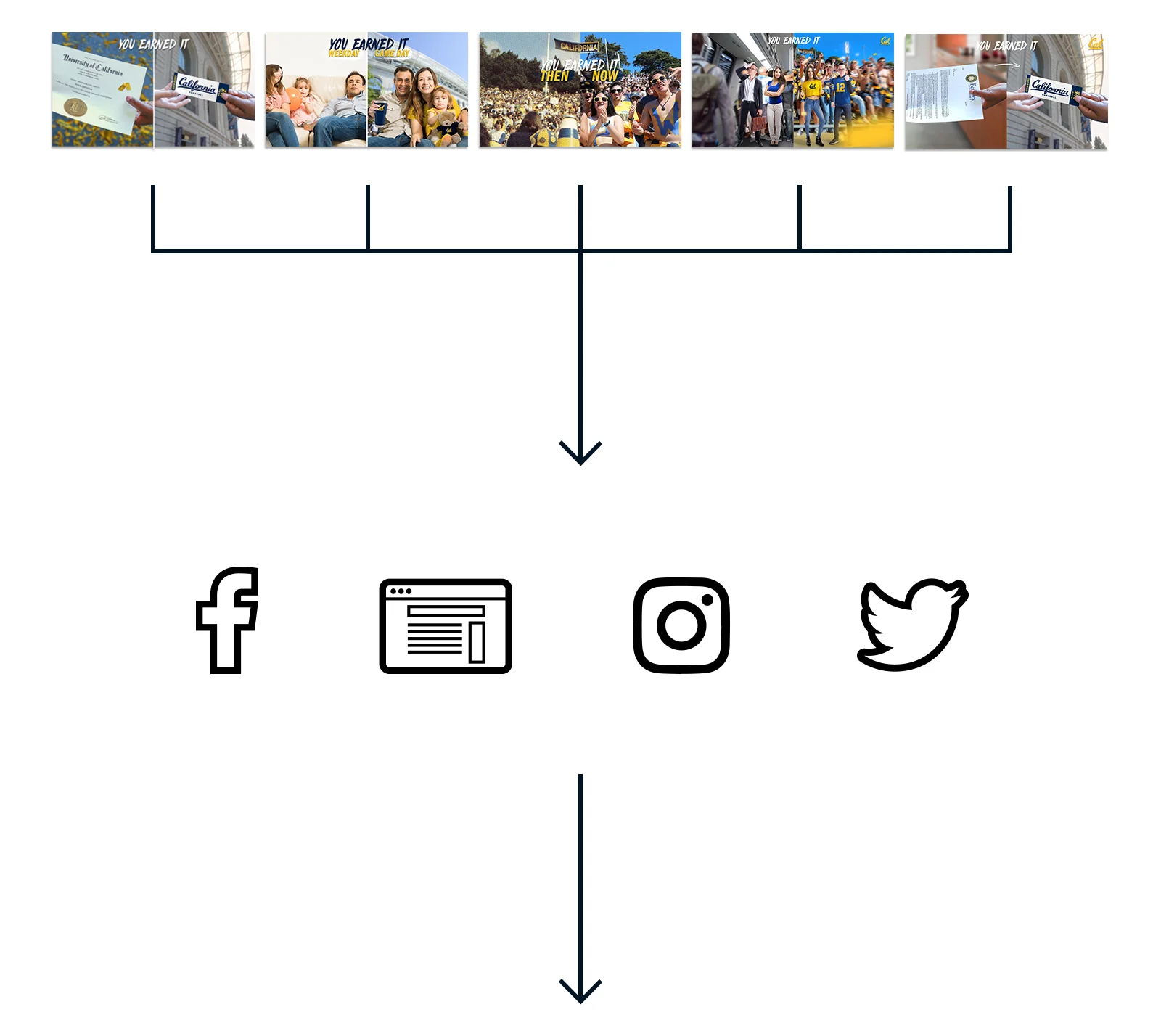Photo by Anthony Hall
Abstract: An analysis of the 2018 marketing campaign for Cal Athletics titled ‘Earn It.’ The campaign’s goal was to increase ticket sales and the Golden Bears fanbase. The approach was to use images that each target audience could make an emotional connection with and link that to our messaging. We served these ads to the target audiences on different digital platforms to see how each group would respond and on which channel.
What do you think of when you hear, ‘Cal Athletics’? You might think about the academic reputation of the university, or images of people protesting as a part of the Free Speech Movement in the ’60s. Maybe you think about the gold Cal script emblazoned on a blue flag or a former player like Aaron Rodgers who is now in the NFL. The Cal Advertising team is very intentional when targeting ads for the different audiences we promote to. The goal when targeting Cal alumni for this campaign was to invoke certain nostalgic images through our advertising. For other demographics, we needed to bridge images of Cal by juxtaposing them next to more recognizable images. We used this imagery to connect with our audience on an emotional level and link that to our brand message. One goal we had for this campaign was to avoid the conventional sports-advertising look of using explicit imagery and strive to go beyond the one-ad-fits-all approach. This advertising campaign targeted specific demographics with nostalgia and/or juxtaposition and tracked which groups responded well to the ads and on the different mediums such as Facebook and targeted web ads.
The tagline for the campaign, ‘Earn It’, was meant to showcase the gritty attitude of our student-athletes and fans. We felt that ‘Earn It’ best conveyed that because nothing at Cal is given. Students work hard to achieve their accomplishments, whether that be sports related or academia. Whether you are older alumni, a casual fan or something in between, there are different ways that we earn it every day. We wanted to show Cal fans that they are tied together by that fact, if nothing else.
This is the transcript put out by the department explaining our campaign:
When nothing is given, you have to #EarnIt.
When you live in the Bay Area, you #EarnIt. You jump on a crowded BART train or sit in traffic just to get to work. You race through the day and earn everything you have.
When you got into Cal, it took hard work. It was an outcome based on your diligence and perseverance. Your acceptance wasn’t guaranteed. It was earned.
When you graduated from the No. 1 public university in the world, that wasn’t an accident. Whether you’re a new alumnus or an Old Blue, success wasn’t just handed to you. You earned that degree. You are Cal Family for life.
The ethos of #EarnIt is something that has guided Cal over the past 150 years. Nothing is assumed and everything is questioned. In the end, you come out stronger because it wasn’t handed to you. You had to work for it. You had to #EarnIt.
Throughout the spring and summer, the football team has embodied the spirit of #EarnIt: fighting to get that extra rep in the weight room, dedicating themselves in the classroom and putting in late nights and extra hours preparing to succeed.
Building a championship-level program isn’t easy. It requires dedication. It requires hard work. Let’s #EarnIt together.
When I first thought about what it means to ‘Earn It’ as a Cal fan, I wanted to portray images that everyone could relate to. One of those recognizable things in the Bay Area is BART (Bay Area Rapid Transit). Everyone that lives in the area has come into contact with BART in one way or another. Working professionals take BART to commute to work and fans take BART to commute to the games. You ‘Earn It’ on a work day, and you earned the right to enjoy a Cal game on the weekend. The photo shown is the first concept sketch for the marketing campaign, and the final ad that was advertised on all BART trains in the Bay Area is seen below that.
Next step was to to figure out how to take a recognizable situation for each target audience and juxtapose it next to an image of a game day experience. The demographics that we were targeting were families, young alumni, older alumni, students, and Bay Area residents. Ads are read left to right for western cultures that see time in a linear sense. I placed the image that the target audience could relate to on the left next to a Cal game day image on the right.
Every young family has a distinct set of daily challenges. On the left of the ad I presented a family that looked like they were in the middle of a long, tiresome week. As your eyes move to the right, you see a family that’s happy, engaged, and having fun enjoying Cal game day. It shows that a game day experience at Cal is enjoyable for everyone in the family. This is the same strategy used for all demographics that we were targeting.
This layout was also used throughout the marketing video created for the campaign as well. The video was created by our film team and can be seen in its entirety here.
We delivered these ads to the target audiences using advertising channels most of which support direct marketing.
After a six-month advertising campaign, the results of engagement were the highest advertising return-on-investment to date. The highest revenue-generating demographic was older alumni via advertising on Facebook. This was surprising to me based on the number of companies in the sports industry that say they are moving money out of Facebook advertising and into other channels that have higher R.O.I. It shows that industry trends aren’t always beneficial to follow and it’s good to keep a close eye on what is working well for you. This campaign was successful, not just in ticket sales for the year, but also in helping us determine the best audiences and channels to allocate our resources to in the future.

